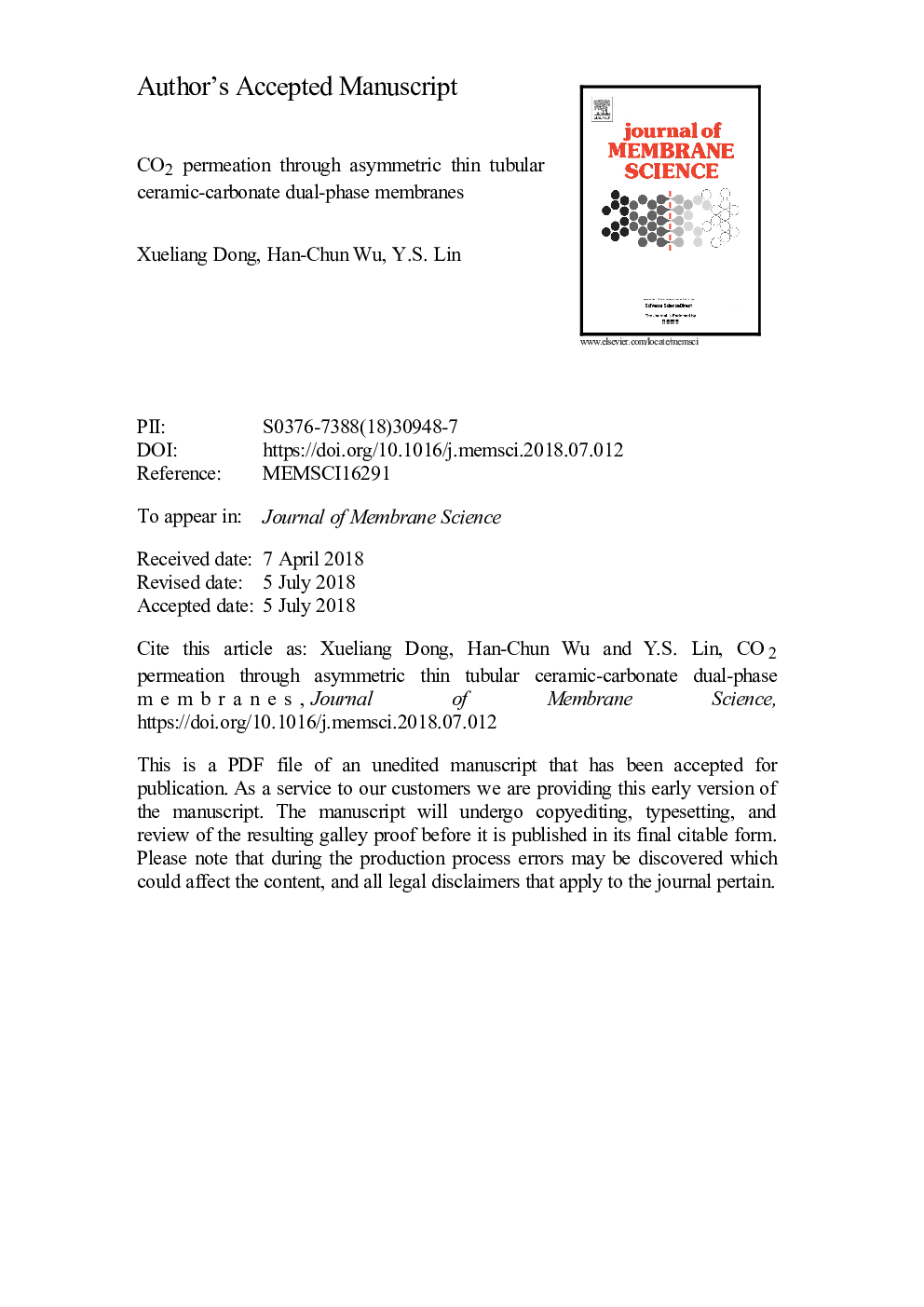| Article ID | Journal | Published Year | Pages | File Type |
|---|---|---|---|---|
| 7019579 | Journal of Membrane Science | 2018 | 27 Pages |
Abstract
Ceramic-carbonate dual-phase dense membrane is a promising high temperature CO2 separation membrane with remarkable CO2 permeance and theoretically infinite CO2 selectivity. This paper reports synthesis and CO2 permeation properties of asymmetric tubular dual-phase membranes with a thin samarium doped ceria (Ce0.8Sm0.2O1.9, SDC)-carbonate separation layer and a thick porous SDC-Bi1.5Y0.3Sm0.2O3-δ (BYS) support. The asymmetric tubular thin (0.12â¯mm) dual-phase membrane has much higher CO2 permeance and lower activation energy for permeation than the thick (1.0-1.5â¯mm) membranes. At 900â¯Â°C with 50%CO2/N2 feed at 1â¯atm, the CO2 permeation flux and permeance for the thin membrane reach 1.53â¯Ãâ¯10â2 molâ¯mâ2 sâ1 (or 2.05â¯mL(STP)â¯cmâ2 minâ1) and 3.16â¯Ãâ¯10â7 molâ¯mâ2 sâ1 Paâ1, respectively, with activation energy for permeation of 62.5â¯kJ/mol. These dual-phase membranes exhibit slightly higher CO2 permeance with essentially same activation energy for permeation, and stable operation, for CO2 permeation with simulated syngas (with the composition of 49.5%CO, 36%CO2, 4.5%N2, 10%H2) feed. The CO2 permeation fluxes of the tubular asymmetric membranes can be well described by the power-function flux equation. The analysis of CO2 permeation data with the model shows that the CO2 separation performance of the tubular asymmetric membranes can be further improved by optimizing the microstructure of ceramic porous supports. This work demonstrates that asymmetric SDC-carbonate dual-phase membrane has high potential for practical application in high temperature CO2 separation.
Related Topics
Physical Sciences and Engineering
Chemical Engineering
Filtration and Separation
Authors
Xueliang Dong, Han-Chun Wu, Y.S. Lin,
